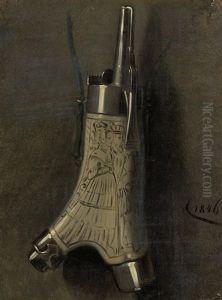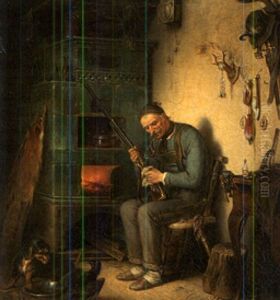Eugen Hess Paintings
Eugen Hess was a German artist known for his contributions to painting and graphic arts throughout the 20th century. Born in 1899, Hess lived through a period of tremendous upheaval and change in Germany, witnessing both World Wars, the rise and fall of the Weimar Republic, the Nazi regime, and the division of Germany into East and West. Despite the turbulent times, Hess managed to carve out a significant career in the arts, developing a unique style that combined elements of expressionism with other contemporary movements.
Hess's early work was heavily influenced by the expressionist movement, which was prominent in Germany in the early 20th century. Expressionism sought to express the meaning of emotional experiences rather than physical reality, and Hess's paintings from this period are characterized by bold colors, dramatic forms, and a sense of urgency and intensity. However, as his career progressed, Hess began to incorporate elements of other movements, including abstraction and surrealism, into his work. This evolution in his style reflected not only his personal growth as an artist but also the changing artistic landscape of Europe at the time.
Throughout his career, Hess faced the challenges of working under restrictive regimes, particularly during the Nazi period when many forms of artistic expression were condemned as degenerate. However, he managed to continue his work, albeit under difficult conditions. After World War II, Germany's division into East and West presented new challenges, but also new opportunities for artists. Hess's work from this later period reflects a more introspective approach, often exploring themes of loss, memory, and the search for identity in a fractured world.
Hess remained active in the art world until his death in 1988. Over the course of his career, he exhibited widely, both in Germany and internationally, and his work is represented in several major collections. Though perhaps not as widely recognized as some of his contemporaries, Hess's contribution to the development of modern art in Germany is significant. His ability to adapt and evolve his style in response to the changing world around him speaks to his resilience and creativity as an artist.




